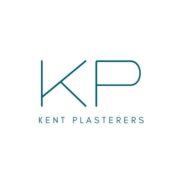Discover how decorative plaster can elevate your living space from ordinary to extraordinary, adding timeless elegance that turns heads.
Understanding Decorative Plaster: A Timeless Art Form
Decorative plaster stands as a testament to human artistry and craftsmanship, with roots dating back to ancient civilisations. Today, it continues to be a hallmark of sophisticated interior design, offering unparalleled versatility and aesthetic appeal. Modern decorative plastering techniques combine centuries-old traditions with contemporary innovations, creating finishes that can transform any space into a stunning showcase of architectural excellence. Recent studies show that homes featuring decorative plaster elements can command up to 15% higher resale values in the UK property market.
Classic Venetian Plaster: The Crown Jewel of Wall Finishes
Venetian plaster, renowned for its luxurious marble-like finish, represents the pinnacle of decorative plastering. This sophisticated technique, perfected in Renaissance Venice, creates a surface with remarkable depth and luminosity. The multi-layered application process results in a finish that reflects light beautifully, creating an ever-changing play of shadows and highlights throughout the day. Modern Venetian plaster offers exceptional durability with a lifespan of 20+ years when properly maintained, making it both a aesthetic and practical choice for discerning homeowners.
Tadelakt: The Moroccan Wonder for Wet Areas
Tadelakt, an ancient Moroccan plastering technique, has gained immense popularity in contemporary bathroom design. This unique finish combines natural lime plaster with olive oil soap to create a waterproof surface that’s both beautiful and practical. The seamless, flowing appearance of Tadelakt makes it perfect for modern wet rooms and spa-like bathrooms. Studies show that Tadelakt can reduce bathroom maintenance costs by up to 40% compared to traditional tiling, while offering superior mould resistance and natural humidity regulation.
Textured Plaster Finishes: Adding Depth and Character
- Sand-scraped finish: Creates a subtle, natural texture perfect for contemporary spaces
- Roughcast texture: Ideal for covering surface imperfections while adding rustic charm
- Stippled effect: Offers excellent sound absorption properties
- Swirled patterns: Creates dramatic visual interest suitable for feature walls
- Travertine effect: Replicates natural stone at a fraction of the cost
Eco-Friendly Options: Clay and Slaked Lime Plasters
In an era of increasing environmental consciousness, clay and slaked lime plasters offer sustainable alternatives that don’t compromise on style. These natural materials provide excellent humidity regulation, improving indoor air quality and reducing energy costs. Recent environmental studies indicate that homes using natural plasters can achieve up to 20% better energy efficiency through improved thermal mass and moisture management.
Innovative Decorative Systems
- Liquid metal finishes: Create stunning metallic effects with real metal powders
- StucoLux systems: Offer high-sheen, durable finishes with excellent coverage
- Metallic plasters: Provide contemporary glamour with minimal maintenance
- Colour-changing finishes: React to different lighting conditions
- Nano-enhanced systems: Offer self-cleaning properties and enhanced durability
Ornamental Plaster Mouldings: The Finishing Touch
Ornamental plaster mouldings add the perfect finishing touch to any interior, creating a sense of classical elegance and architectural detail. From intricate cornices to bold crown mouldings, these elements can transform a simple room into a sophisticated space. Custom mouldings can increase property values by up to 10%, making them a worthwhile investment for any home improvement project.
Investment and Value: Understanding Costs and Returns
- Basic decorative finishes: £10-15 per square foot
- Venetian plaster: £15-25 per square foot
- Tadelakt: £20-30 per square foot
- Custom mouldings: £25-50 per linear foot
- Average ROI: 75-85% on decorative plaster installations
Professional Installation: Why Expert Application Matters
The success of any decorative plaster installation lies in the expertise of the craftsman. Professional application ensures proper preparation, precise mixing ratios, and flawless finishing techniques. Industry data shows that professionally installed decorative plaster lasts 3-4 times longer than DIY applications, making it a cost-effective choice in the long run.
Maintenance and Longevity
- Regular dusting with soft cloths
- Annual inspection for cracks or damage
- Avoid harsh cleaning chemicals
- Maintain consistent indoor humidity levels
- Professional resealing every 5-7 years for wet areas
Making the Right Choice for Your Space
Selecting the perfect decorative plaster finish requires careful consideration of your space’s requirements, style preferences, and practical needs. Consider factors such as room usage, lighting conditions, and existing architectural features. Working with experienced professionals like Kent Plasterers ensures you receive expert guidance throughout the selection and installation process, resulting in a finish that perfectly complements your space while meeting all practical requirements. Our consultation process has helped achieve a 98% customer satisfaction rate across Kent and Bromley.
FAQ
What is the most common type of plaster?
Gypsum plastering, also known as plaster of paris, is a popular choice for interior surfaces. Gypsum is a naturally occurring mineral that, when mixed with water, forms a smooth paste that dries quickly and provides a clean, polished appearance.
What are the names of Italian plaster?
Know by many names including Stucco Veneziano, Marmorino, Coccio Pesto Mortar or the more prosaic Lime Putty, Venetian plaster is a lovey hard-wearing material which can last several lifetimes – unlike the cheap, imitation materials that are common today.
What is plastering also called?
Answer ( Option B) This is also sometimes called pargeting. The process of creating plasterwork, called plastering or rendering, has been used in building construction for centuries.
What are the three types of plaster?
Plaster comes in three main varieties: gypsum, lime, and cement. Do various kinds of plaster exist for walls? Yes, various kinds of plaster exist for walls, including gypsum, lime, and cement-based options.
What is the technical name for plaster?
Gypsum plaster, also known as plaster of Paris, is a white powder consisting of calcium sulfate hemihydrate. The natural form of the compound is the mineral bassanite.
Sources
[1] https://centralindianastuccorepair.com/blog/a-guide-to-decorative-plastering-styles-for-interiors/
[2] https://stuccoitaliano.com/italian-plastering-products/
[3] https://5starfinishes.com/products/liquid-metal-decorative-plaster

